

| Visitors Now: | |
| Total Visits: | |
| Total Stories: |

| Story Views | |
| Now: | |
| Last Hour: | |
| Last 24 Hours: | |
| Total: | |
Amazing Buildings Devoured By Sand
Friday, August 17, 2012 14:00
% of readers think this story is Fact. Add your two cents.
The deserts and sands are the best landscapes for finding old and abandoned buildings. The arid climate lends itself to preservation, and there is little danger of serious decay or damage from flooding. At the same time, the sand is an ever-shifting geographic feature that can swallow whole towns both quickly (as in a violent sandstorm) or slowly (as it shifts over time). This article deals with the partially buried buildings in sand, some of which were abandoned for hundreds of years, and some only a few years.
1. Rubjerg Knude Lighthouse, Denmark
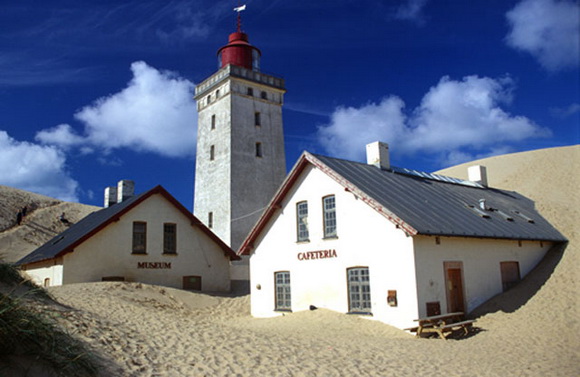 |
| Lighthouse in 2000. link |
Rubjerg Knude Lighthouse is located on the coast of the North Sea in Rubjerg, in the Jutland municipality of Hjørring in northern Denmark. It was first lit on December 27, 1900. Construction of the lighthouse began in 1899.
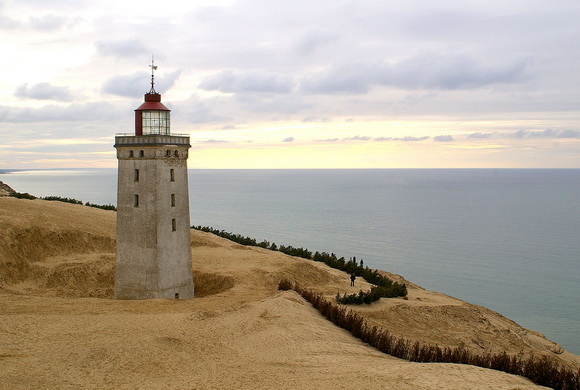 |
| Lighthouse in 2009. link |
In the last few decades more and more sand built up around this light house. The people there tried to fight against the sand, but it didn’t help. They couldn’t keep the lighthouse and put a museum and a cafeteria in the old buildings. But the endless fight against the sand seemed quite useless. In 1999 they finally gave up completely and gave the nature back what it demanded. [link1, link2, map]
2. The Buildings of the Abandoned Town of Kolmanskop, Namibia
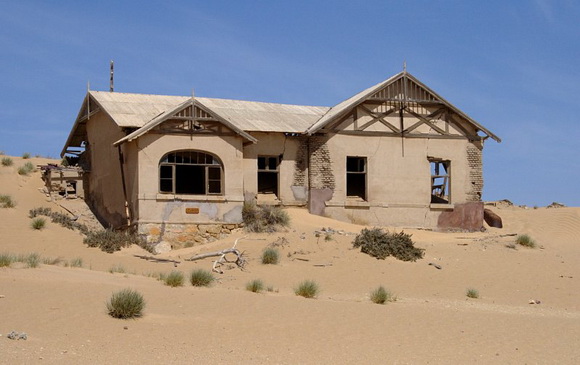 |
| link |
Kolmanskop is an abandoned town in the Namib desert in southern Namibia, a few kilometres inland from the port town of Lüderitz. It was named after a transport driver named Johnny Coleman who, during a sand storm, abandoned his ox wagon on a small incline opposite the settlement. Once a small but very rich mining village, it is now a popular tourist destination run by the joint firm NamDeb (Namibia-De Beers).
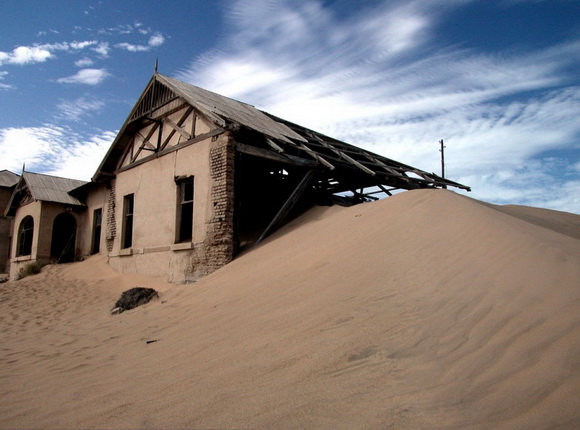 |
| link |
The town declined after World War I when the diamond-field slowly exhausted and was ultimately abandoned in 1954. The geological forces of the desert mean that tourists now walk through houses knee-deep in sand.
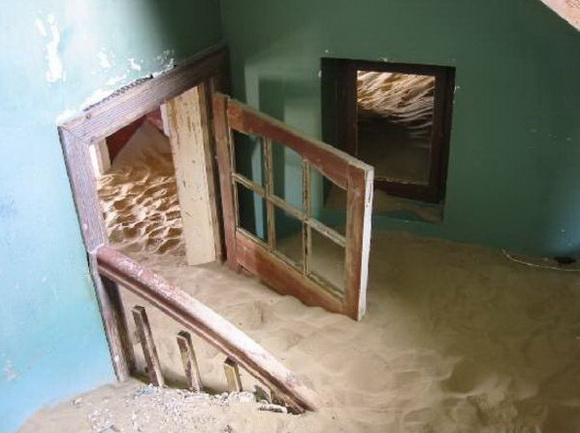 |
| The interior of one of the houses in Kolmanskop link |
Kolmanskop is popular with photographers for its settings of the desert sands’ reclaiming this once-thriving town. Due to its location within the restricted area (Sperrgebiet) of the Namib desert, tourists need a permit to enter the town. [link, map]
3. Tilsandede Kirke (The sand buried church), Denmark
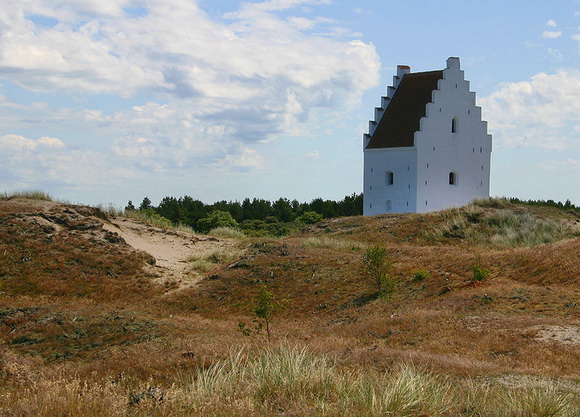 |
| link |
At first glance, the Tilsandede Kirke, located in Skagen, Denmark, isn’t much to look at. However, the small, white tower that can be seen is only one part of the whole church. The rest of the church remains buried under the earth, hence the name, which means Sand-Buried Church.
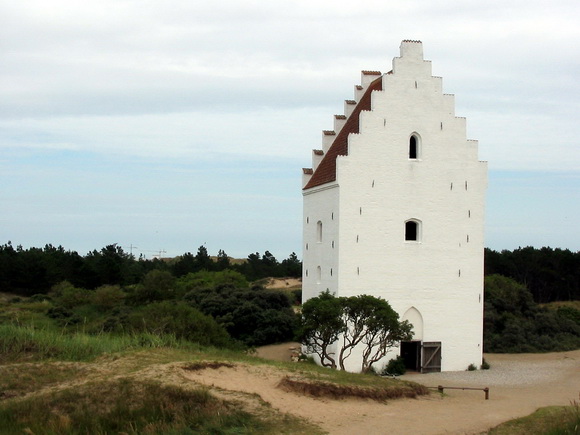 |
| link |
The Tilsandede Kirke closed in 1795 after sandy winds continuously built up dunes around the church. Locals used the stones from several parts of the church for other buildings in the area. After much research, the location of the nave and vestry was discovered and marked with stakes for visitors. [link, map]
2012-08-17 13:44:44
Source: http://www.theworldgeography.com/2012/08/amazing-buildings-devoured-by-sand.html




I love this kind of stuff. There is something fascinating about old abandoned buildings. When I travel I like to seek out places like this.